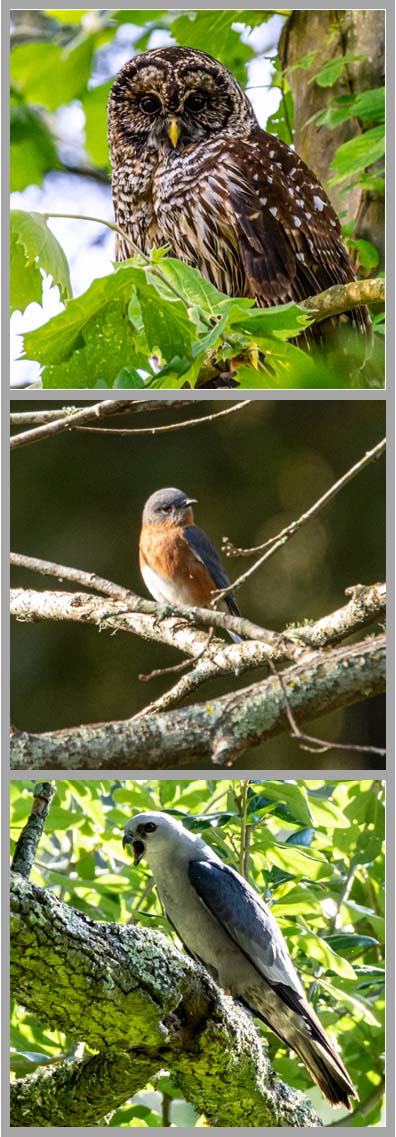White-eyed Vireo. Great Crested Flycatcher. Summer Tanager.
These are just a few of the birds that visitors to the LSU Hilltop Arboretum often spot when walking the trails and enjoying the meadow. Hilltop board member and birder, Harriett Pooler, has been observing Hilltop’s feathered friends for some time now and she’s identified at least 75 different species. Some of these visitors pass through on a migratory route, while others happily call Hilltop home.
Five Tips for Finding Birds
 “It’s a good place for beginner birders,” says Pooler regarding Hilltop’s 14 acres.
“It’s a nice little pocket in the middle of town.” Being in the middle of town means
the arboretum is easily accessible for families or bird enthusiasts. Pooler offers
the following tips for catching a glimpse of Hilltop’s winged visitors:
“It’s a good place for beginner birders,” says Pooler regarding Hilltop’s 14 acres.
“It’s a nice little pocket in the middle of town.” Being in the middle of town means
the arboretum is easily accessible for families or bird enthusiasts. Pooler offers
the following tips for catching a glimpse of Hilltop’s winged visitors:
- Visit early in the morning. There is something to the adage, "The early bird catches the worm." Pooler says birds are more active in the morning, making that the ideal time for observing them.
- Keep your volume down. Loud noises may disturb birds, so speak softly when bird watching.
- Move slowly. Sudden movements may flush the birds out of their resting spots. Be still and enjoy the view and your time in nature.
- Learn to recognize bird calls. Pooler says birders often hear a bird before spotting it. Learning bird calls makes finding them easier.
- Know where to look. Pooler compares finding birds to looking for a best friend. “You know where they’ll be,” she says. For example, look to the tops of trees and high above if you’re searching for hawks. Other birds may have a favorite spot to rest, and it helps to identify those locations. Pooler also recommends looking on the ground for birds, such as Eastern Bluebirds, Northern Mockingbirds, or Eastern Towhees. “They fly to the ground for insects and can be easier to spot then,” she says.
A Bird Watchers Tool Kit
In addition to binoculars, bug spray and a little patience, beginner bird watchers can also log in to a variety of tech tools to make spotting their favorite feathered friends easier. The Merlin app by the Cornell Lab helps observers identify the song and visual traits of birds. The Sibley app is based on the “Sibley Guide to Birds.” The iBird Pro app is also an option to help beginners boost their birding skills.
Gardening with a Purpose
One of the things that makes Hilltop a great place to view birds is the habitat. The wildflower meadow attracts thousands of insects which are an important part of a bird’s diet. The home gardener can mimic this environment by choosing plants that do the same in their own backyard. Red mulberry trees, live oaks, American hollies, American beautyberry and salvia are just a few examples. These plants provide a home for insects and offer berries and fruits that also support birds.
While many birders travel extensively and trek to faraway places to catch a glimpse of their favorite birds, families need only make the short trip to Hilltop to catch a glimpse of a variety of birds like the Barred Owl, Northern Cardinal or Mississippi Kite. Pooler says it’s a great way to get children interested in nature.
Are you interested in learning more about landscapes and the Hilltop meadow? Join us for the Summer Learning Series 2022. Special guests will discuss growing camellias, creating memorable landscapes and the past, present and future of the Hilltop meadow.